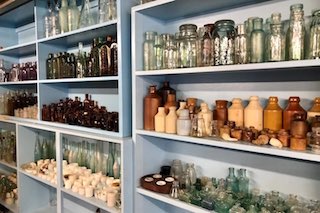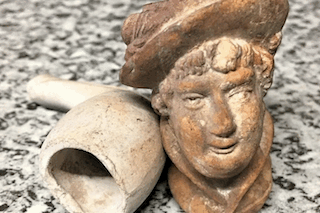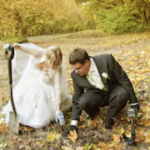If you love the idea of finding hidden treasures and exploring the mysteries of history, then mudlarking might just be the perfect hobby for you. This fascinating activity has captured the imaginations of many who enjoy beachcombing and prospecting. In this blog post, we’ll take you through the exciting world of mudlarking, provide tips and tricks for beginners, and introduce you to some of the best places to start your own mudlarking adventure.
What is Mudlarking
Mudlarking is a hobby that involves searching along the banks of rivers for interesting items that have washed ashore or been buried over time. Mudlarkers often find everything from old bottles and pottery shards to more unusual items like human bones. It’s a wonderful way to connect with history and uncover long-forgotten treasures.
The History of Mudlarking
The term “mudlarking” originally referred to people, often children, who scavenged along the River Thames in London during the 18th and 19th centuries. Today, it has evolved into a popular hobby enjoyed by history enthusiasts and treasure hunters alike.
Mudlarking is a hobby that usually involves walking along the banks of rivers, picking up anything interesting you find and examining it. This could be anything from old bottles to pottery shards or even human bones! You can mudlark anywhere in the world, but if you want to do so on the east coast of Australia then head down to Sydney Harbour Foreshore Reserve.
It is perfectly legal to go mudlarking in Australia. It is popular along the river Thames foreshore in London, in the UK, however there are still plenty of relics you can find across the eastern shores of New South Wales. You don’t need to walk in the thames mud to enjoy this hobby, we have are own way to do this in Australia. “You can’t find Roman items suitable for the British Museum but you can find many Victorian artifacts if you do your research first on the history of the spots and then plan your search. Find maps online which includes foreshore maps.
Mudlarking Around the World
While the River Thames is famous for its mudlarking opportunities, you don’t need to travel to London to enjoy this hobby. Mudlarking can be done anywhere there’s a riverbank or shoreline, including the eastern shores of New South Wales, Australia. Sydney Harbour Foreshore Reserve is a popular spot for local mudlarkers.
Why Mudlarking is the Perfect Hobby
Mudlarking offers a unique blend of adventure, history, and outdoor activity that makes it an enticing pastime for many.
Connecting with History
Each item you find while mudlarking tells a story from the past. Whether it’s an old coin, a piece of pottery, or a Victorian-era artifact, you’ll feel a sense of connection to the people who once owned these items. This is the perfect day out for anyone fascinated with history, especially those who enjoy a bit of thrashing around in mud and water!
If you’re lucky enough to have access to water near your home then don’t be afraid to get down and dirty looking for treasures.
Check your high and low tides before you go out. Low tides are obviously best.
Make sure that before you pack the following items: a pair of sturdy shoes, rubber gloves, a water bottle, sunscreen and your mobile phone.
Then make sure you have the following gear: gloves to protect your hands from sharp objects, broken glass and mud; an old bucket or bag for carrying finds home in; knee-high boots; a bucket or an empty container with a lid that will hold as much weight as possible without breaking.
You don’t need a metal detector for this activity, some enthusiasts use a metal spoon to search, but it can take a long time. Handheld metal detectors, like pinpoints, can help you pick out targets quickly and dig smaller holes so you are kinder to your environment. Since you may be searching in a wildlife area, it is important to care for the local environment too.
If you’re on holiday and have a few hours to spare then mudlarking is your best bet for finding a treasure!
There is a great show on Youtube called “Mudlarking the Thames”. A woman called Nicola White searches the Thames foreshore in London. She is very interested in collecting clay pipes from the 17th century onwards, pieces of china, glass and china bottles, animal skulls and other bones, coins, jewellery, religious offerings etc. She shows what she has found that day after she has cleaned them and what she has found out about them. She also makes art from her finds. Fascinating programme. Highly recommended by one of our readers, Jo!
Places to go for Mudlarking
There are lots of places where mudlarkers go; some popular areas in Australia include:
– Sydney Harbour Foreshore Reserve
-Wallamba River in NSW
-The Yarra River in Melbourne
-Cabbage Tree Creek on the Central Coast
– Foreshore Park in Newcastle
– The foreshore at Kurnell near Cronulla Beach, Sydney.
Mudlarkers in Australia can find a range of items such as old bottles, fishing weights and shotgun shells. There are gold and silver objects to be found but it is more likely to be items you can see in the shelves below.

Where to search for objects
Our tips for mudlarking and river finds
- Search for areas of early historical significance and early settlements
- Find areas where there is local dumps for rubbish, and some of these may be in waterways.
- Look for early manufacturing and dump sites near creeks
- Explore rivers after a storm to see if items are uncovered.
Read our Magnet Fishing Article
Good luck for your Mudlarking Adventures! We hope this has been helpful and sparked your interest in this new activity! Here are some lovely books about the finds (mostly in the UK).
Bottle Collecting
Bottle collecting is something that many Australians have done at some point. Bottle collecting can be a great hobby, as bottle collecting very typically has an interesting history behind it. If you are interested in bottle collecting, this article might help you out. Read on to learn more about bottle collecting!
Bottle collecting has a long history in Australia. In fact bottle collecting reached Australia before bottle collecting reached America! The first bottle collectors in Australian bottle collecting history were Macarthurs and Crawfords, two families that operated ferry services between Australia and Tasmania in the late 1800s.
Bottle collecting initially started as a way to make money, as those ferry services could only run with bottle collections. Bottle collectors would sell their bottles for bottle price + bottle handling fee (this was before deposit schemes).
Today bottle collections are still done in Australia because many historical sites have been turned into bottle collection sites. Old bottles from pharmacists (chemists) are collectors items and some rare bottles fetch excellent prices on eBay!
Ginger beer bottles are bottle collectors items, as ginger beer was very popular before soft drinks were widely available.
Cobalt blue bottles are bottle collectors items for their lovely colour and bottle collectors can be highly selective with the types of cobalt blue bottles they’ll actually collect.
Beer bottle collecting is a popular Australian hobby that continues to grow in popularity every year!
Milk bottles that once held household milk are popular too. Bottle collectors like to collect them because they’re a symbol of modernity and Australian bottle collecting history.
If bottle collecting is something that interests you then research old tip sites. You can organise bottle collections with friends or by yourself, just be sure to bring a hand trolley or wheelbarrow to carry your bottles!
Bottle collectors often find quite valuable things in bottle collections, so keep an eye out for opportunities. Bottle collectors are not allowed to dig up historical sites, but bottle collecting might still be possible on old farms if the owners allow it.
Join the Mudlarking Community
Mudlarking is more than just a hobby; it’s a community of like-minded enthusiasts who share a passion for history and treasure hunting.
Online Communities
Join online forums and social media groups dedicated to mudlarking. These platforms are great for sharing finds, tips, and connecting with fellow mudlarkers.
Recommended Resources
Check out the YouTube show “Mudlarking the Thames” by Nicola White. She shares her finds from the Thames foreshore and offers valuable insights into the history and significance of each item.
Conclusion
Bottle collecting can be a great hobby that teaches many interesting facts about Australian history. Bottle collecting also typically has an interesting history behind it as well. If interested, why not do some bottle collecting?


